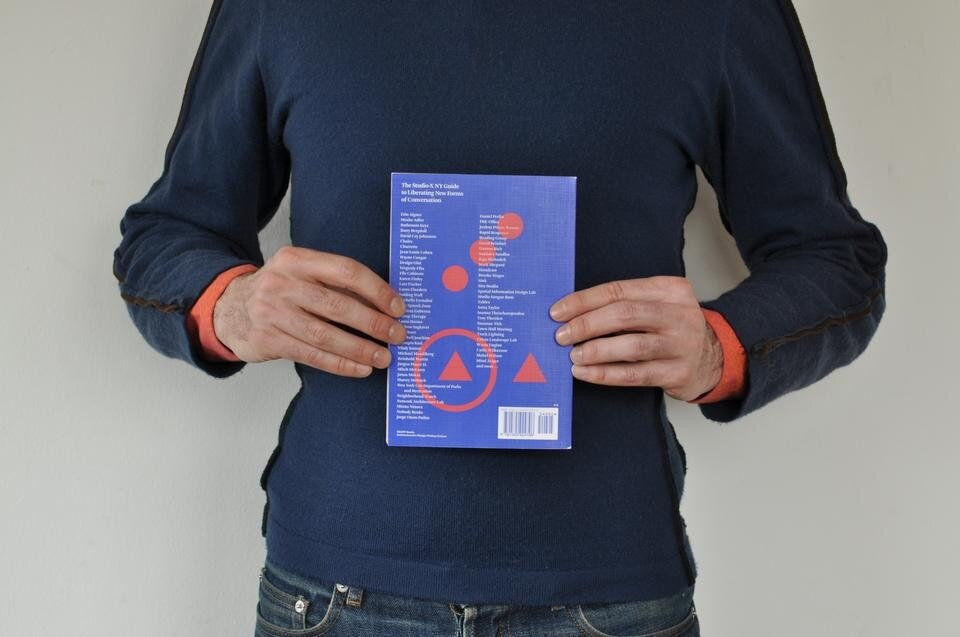Studio-X is a multifunction outpost of Columbia University's Graduate School of Architecture, Planning and Preservation in lower Manhattan. Alternately a studio space for several of GSAPP's research groups (including C-Lab, Netlab, Living Architecture Lab and Urban Landscape Lab), exhibition space, and events venue, Studio-X's flexible programming makes it a uniquely unpredictable site where architectural and urban thinkers interact with a curious public. Now exporting its model to other cities around the world where GSAPP has a presence, including Rio de Janeiro, Beijing, and Amman, Studio-X marks its first publication with The Studio-X NY Guide to Liberating New Forms of Conversation. José Esparza talked to the book's editor and Studio-X NY's former programming director Gavin Browning, as well as Glen Cummings and Aliza Dzik of New York design firm MTWTF, who designed the book.
Domus: Three years in, and the concept of Studio-X is still confusing to many people (including some distracted GSAPP students), can you tell us a bit more about what it was like operating from as the downtown space of an uptown university?
Gavin Browning: At the book's launch at Storefront for Art and Architecture, Mark Wigley said that it's a "Studio" because it's an empty room, and it's "X" because you have no idea what will happen there. He's opening a series of these empty rooms around the world, and it's really exciting.
In terms of operating there, I felt that because it's a working studio, there was no need to pretend that it was a sacrosanct event space. I never attempted to cover up the diversity or mixture of use, and in fact, The Studio-X NY Guide celebrates that aspect as fostering something new. I really wanted the evening programming at Studio-X NY to be a forum to workshop and process ideas in the same way that occurred on research projects during the day. I think that the informality of the space—it isn't an auditorium or a classroom, as signaled by in-process projects pinned-up on the wall and people working in the background—made people feel comfortable with sharing the ideas that they were processing, too. I'm not saying this doesn't occur uptown. But a lecture at Columbia University's Wood Auditorium is de facto more formal simply by occurring behind a podium, in an auditorium, on a university campus. And of course, by being a lecture.
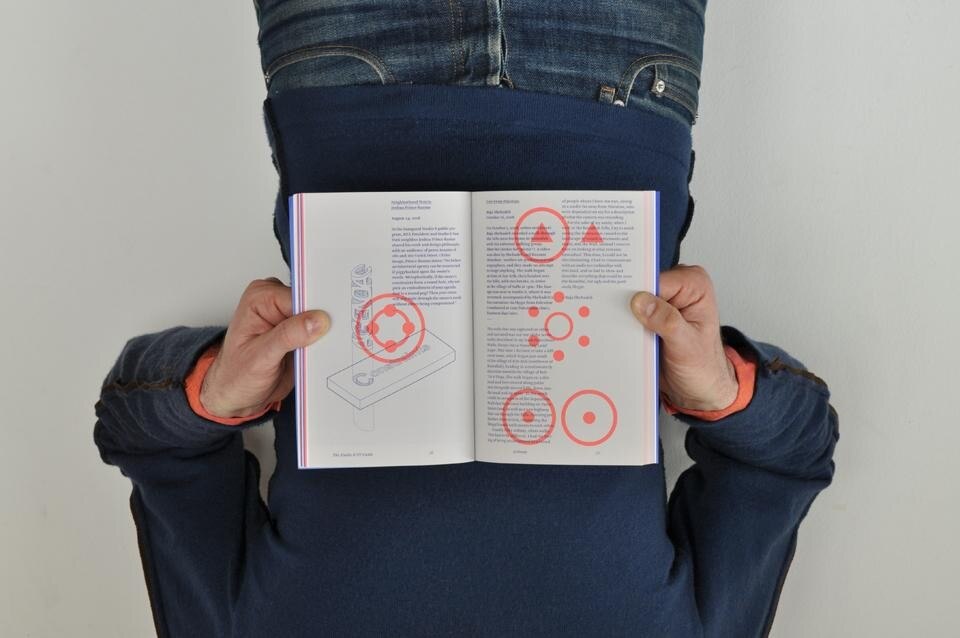
GB: That's a really big question! But thinking back to the beginning, I remember finding it daunting. How could an unmarked, unadvertised space on the 16th floor of a Soho office building become a hotspot and gathering place? And how do you even go about that? Do you build up the infrastructure in order to host events, or do you host events in order to justify an infrastructural build-up? I decided to just start. I invited people who worked in 180 Varick Street to present their work, and I invited people from 180 Varick Street to sit in the audience. Since it was a local event, I called it "Neighborhood Watch." This interest in investigating the local remained throughout the overall program. But a lot of questions persisted. What topics should be discussed, and in what formats? Could it be a performance space? Could it be a gallery? So I talked to lots people. Felicity Scott suggested capitalizing on the lack of a printed events calendar, pointing out that the space could host timely events. I instituted "Rapid Response," a forum to respond to current events on a monthly basis, and the ability to be quick (and the informality that this quickness requires) became another hallmark of the space. I also invited people to respond to the conditions of space. Daniel Perlin performed re:construction. He asked, "What do buildings sound like?," and using wood, a hammer, nails, microphones and a laptop, he built a house that contained the sound of its own making. I realized that public programming that tested and worked through ideas were also a forum to test and work through ideas about what Studio-X could be—yes, it could be a performance space, and yes, it could be a gallery too!—and in this way, an identity and an infrastructure were built over time.
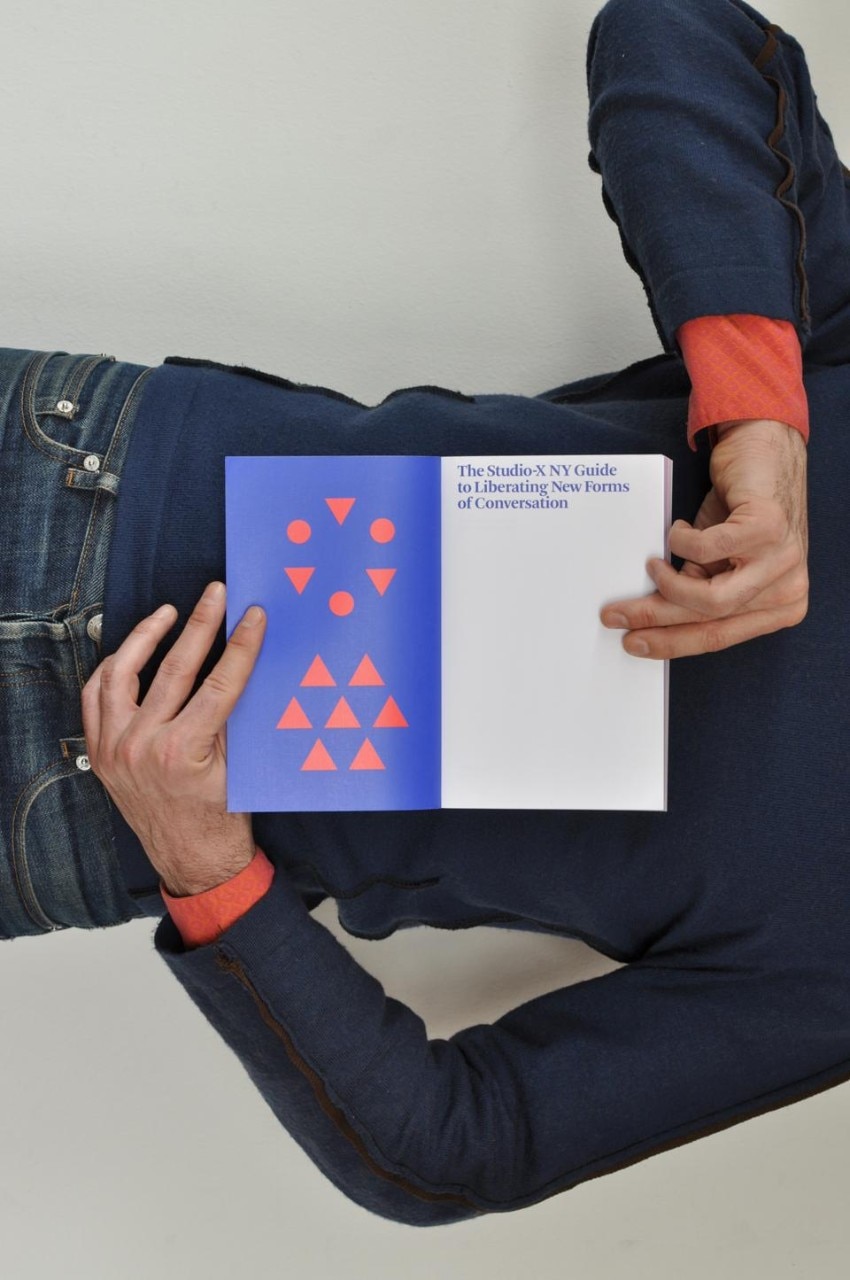
MTWTF: Somewhere during the second or third draft, we decided to assess the book in terms of use-value. We asked, "Can a reader really use these chapters to do something?" One result of this thinking is the diagrams in Chapter 5: "Stage." Although the diagrams are documentation of past events, they're also offered up as an index of ways to arrange a room.
I realized that public programming that tested and worked through ideas were also a forum to test and work through ideas about what Studio-X could be—yes, it could be a performance space, and yes, it could be a gallery too!—and in this way, an identity and an infrastructure were built over time.
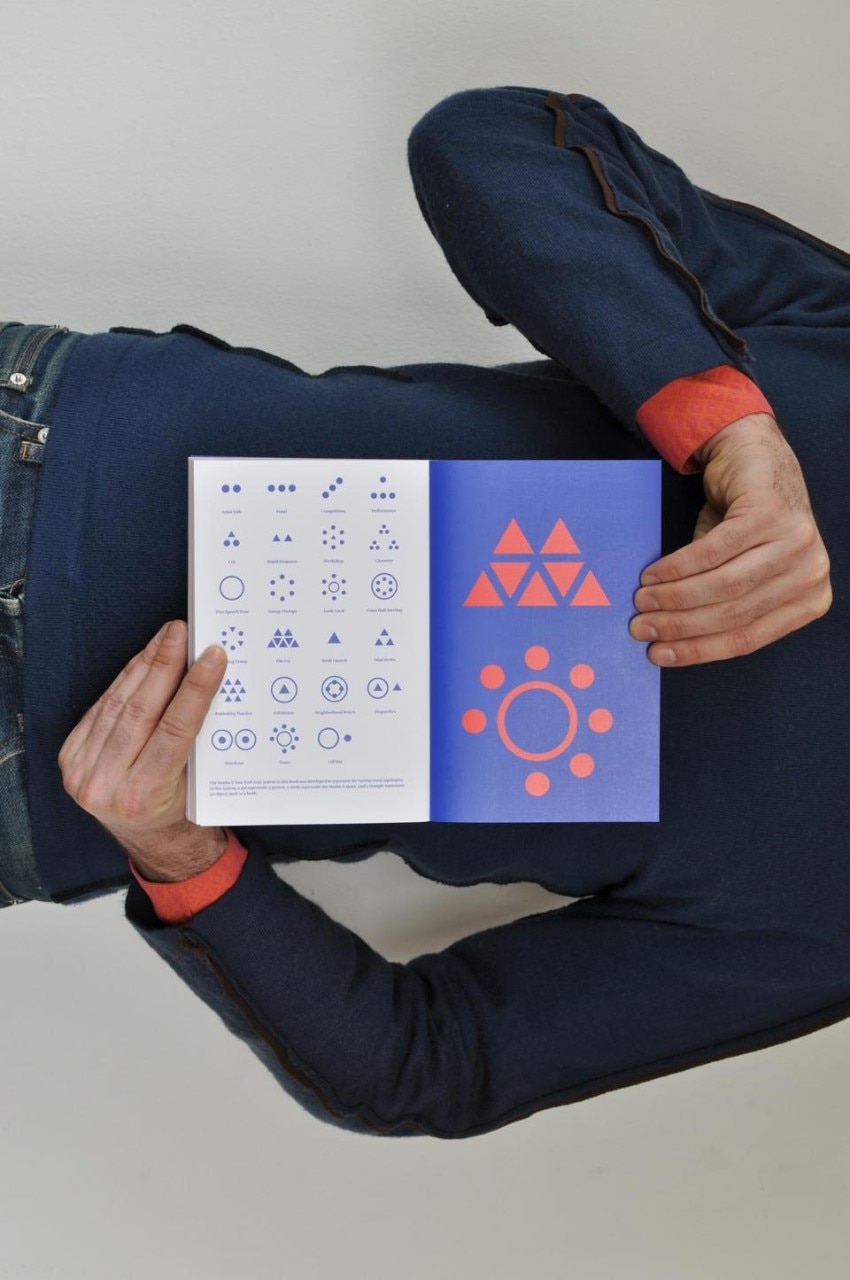
Regarding flexibility and Studio-X NY, there's a tremendous amount of resistance from those in the space towards determining gestures. For example, a plywood closet and shelf were built in January 2009 to alleviate storage and surface space needs. To this day, the wood remains untreated. If it were painted or stained, it wouldn't be as flexible as in its naked state—a surface for whatever meaning might be temporarily assigned. I think that this reluctance to ascribing fixed meanings is great. It's what allows Studio-X NY to be so open-armed, and to accommodate so many different people and uses at once.
In contrast, The Studio-X NY Guide really reifies concepts. In highlighting the importance of the untreated wooden pieces, it says that Studio-X NY is no longer a blank slate—it's been tested, lessons have been learned, and these are the best practices. But in fact, everything is up for debate. The next parties to run the space can tear down these guidelines, and in the spirit of Studio-X, build new ones.
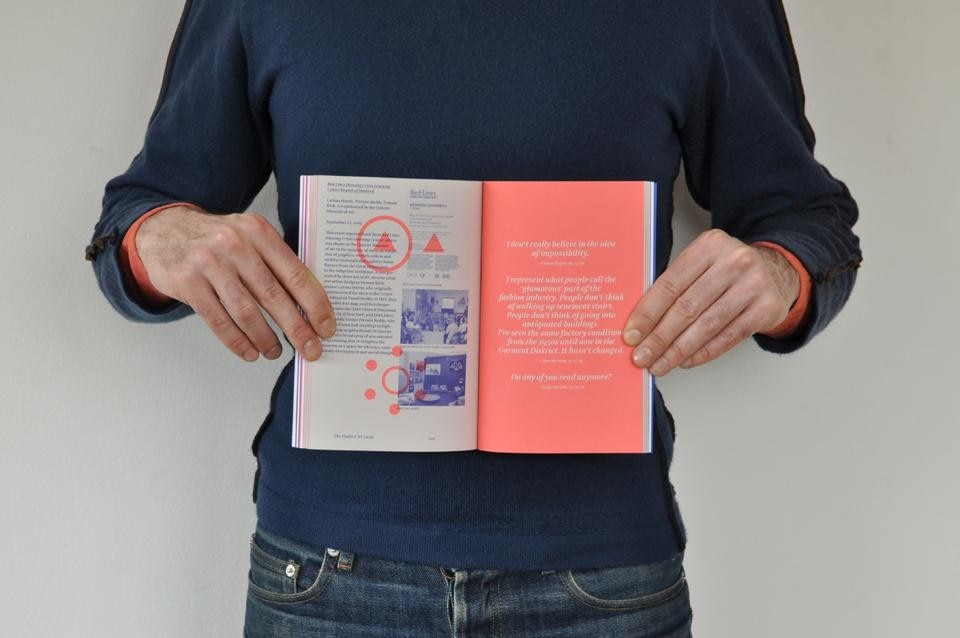
GB: It wasn't planned in advance. But luckily, every event was photographed, and most were recorded in some way (barring those classified as a "Free Speech Zone," which were off-the-record). So between images, recordings, emails and general ephemera, I had a lot to work with. Where I lacked recordings, I interviewed past participants or asked them to write about their experience. Sukhdev Sandhu wrote a reflective essay on the roles of the windows, stars and cityscape beyond Studio-X NY while performing Night Haunts with composer Andrew Ingkavet in the dark in 2008. Wayne Congar and Troy Therrien submitted a worms-eye view diagram of Studio-X NY as it was arranged during the conversation on their 2009 competition Imagining Recovery. So, alongside delving into the archive, the book was a way of commissioning new work.
The configurations in "Stage" were created from memory or by looking at photos. I would sketch them while riding the subway, then hand off crude diagrams with names, dates, dots and directional arrows to MTWTF. They did a terrific job of translating this information into a clear and cohesive visual language. We included dates for each of these arrangements, which could be cross-referenced with "Index" at the end, "Enter" at the beginning, and with the string of oddball quotes that peppers the text in between—inflammatory, stirring, hilarious or zany things that people said.
Regarding the rigor of documentation: again, it was done with the hope that people will use the book. You can use it to varying degrees, but if you want to fanatically re-create Studio-X NY, then that option is available to you. "Transform"—a step-by-step guide to transforming a work space into an event space in thirty minutes—includes all of the items you'll need, down to the brand, style, size and cost of the plastic spray bottle and cleaning fluid used to wipe down surfaces before events. Same for the chairs, tables, shades, track lighting bulbs, and the 559 screws that hold together the closet. We called these details "forensics," and they're really obsessive in highlighting exactly which infrastructural elements effectively create a great environment for conversation and exchange. But they can't succeed on their own. They need to work in tandem with the organizational strategies of "Classify" and the general enthusiasm of "Populate," which features a headshot of every speaker and sponsor at Studio-X NY.
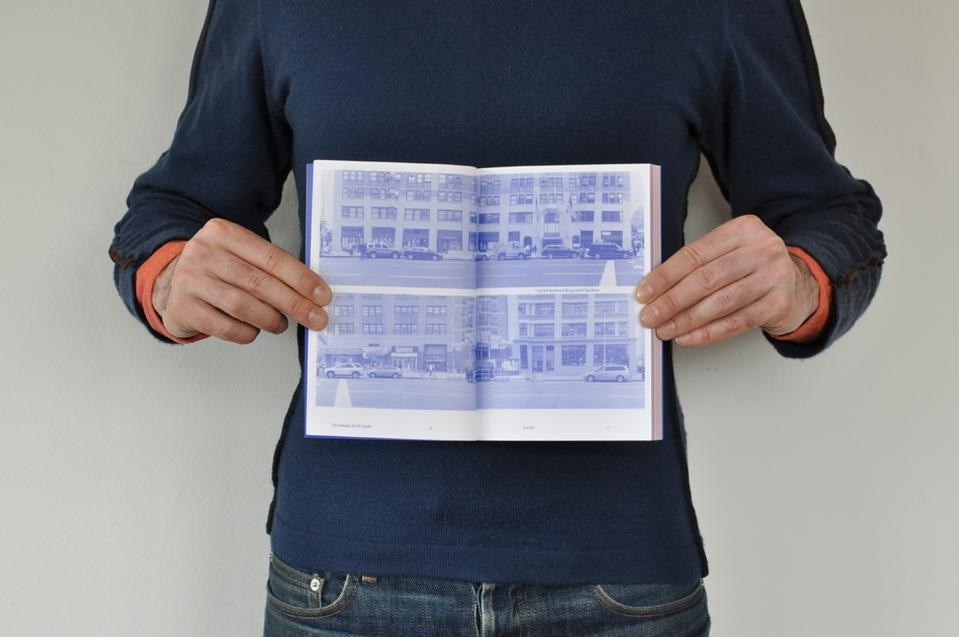
GB: I mean that the world is filled with canisters, and you just have to grab the ones that speak to you. I love the typologies in The Studio-X NY Guide for a lot of reasons: they're lighthearted, and like "Neighborhood Watch" they reference my upbringing in suburban America. I think some new typologies will emerge from Studio-X Mumbai and Studio-X Rio very soon, and it'll be fascinating to see what they reference.
Any specific one that you found the most enlightening? Why?
GB: I found the typologies most compelling when they operated in combination. Take, for example, a daytime workshop on ink led by Michelle Fornabai and Karen Finley. It's an "Exhibition" in that Michelle's 2010 exhibition ink served as a backdrop for her and Karen to discuss the use of ink in art and architecture; it's a "Workshop" in that students of both disciplines made exquisite-corpse drawings with sumi ink and vellum; and it's an "Artists Talk" in that Michelle and Karen talked to each other about common threads in their work. Or, consider a discussion on the future of New York City's Garment District. This occurred in 2009, around the time of a proposed rezoning that many worried might negatively impact the fashion industry in New York City. After some convincing, representatives from The Department of City Planning, The Economic Development Corporation, The Council of Fashion Designers of America, Manhattan Community Board 5 and The Fashion Center Business Improvement District convened at Studio-X NY. Vishaan Chakrabarti moderated their discussion. It's a "Town Hall Meeting" because it brought all stakeholders together in a public conversation, and in a neutral space with an unbiased moderator; it's a "Look Local" because it examines a neighborhood that it not your own (or, the opposite of "Neighborhood Watch"); it's "Group Therapy" because it was only the second time that all parties had sat down together, and because I think it was cathartic.
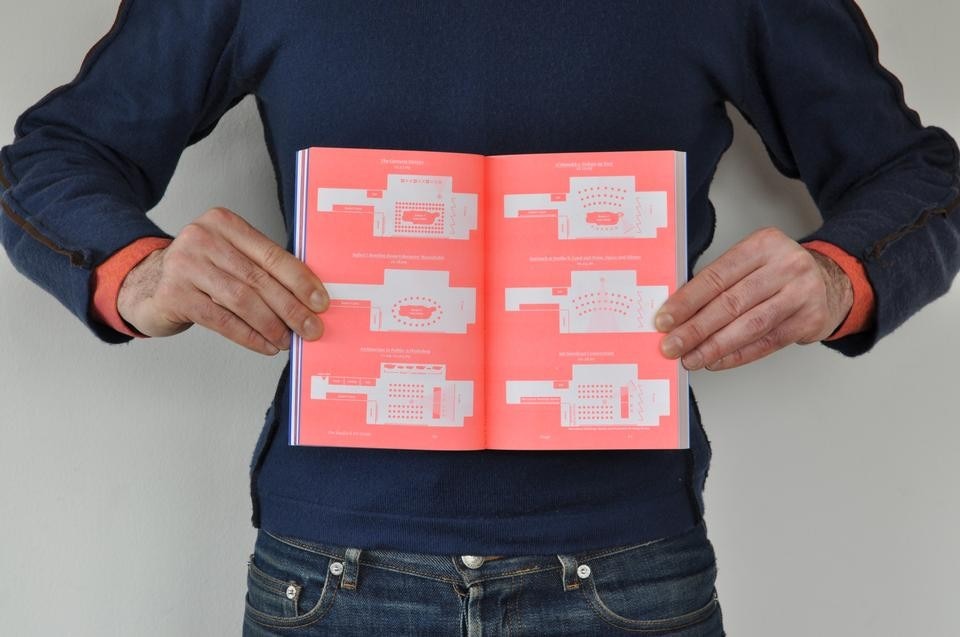
MTWTF: Yes, "come to the surface" is a good way to put it. The process alternated between remembering and representing and then back again. Gavin tried to recall all the configurations the room had, and we tried to create diagrams for them. Of course once you can see the representation, you realize what is missing. It became a looping process, which was really enjoyable. The relationship between remembering and representing is always surprising, especially when you are condensing one long blur of events into 37 discrete slices.
Do you think of the graphic design as something that enhances the reading experience?
MTWTF: We would say that graphic design creates specific viewing experiences. The Studio-X NY Guide is a good example of this. The book is primarily an index of documentations of Studio-X NY, put into a narrative order. Some documentations are visual (the spatial configurations in "Stage," the headshots in "Populate"), and others are textual (the listing of all past events in "Index"). They are all attempts to try to relate what happened in a useful way.
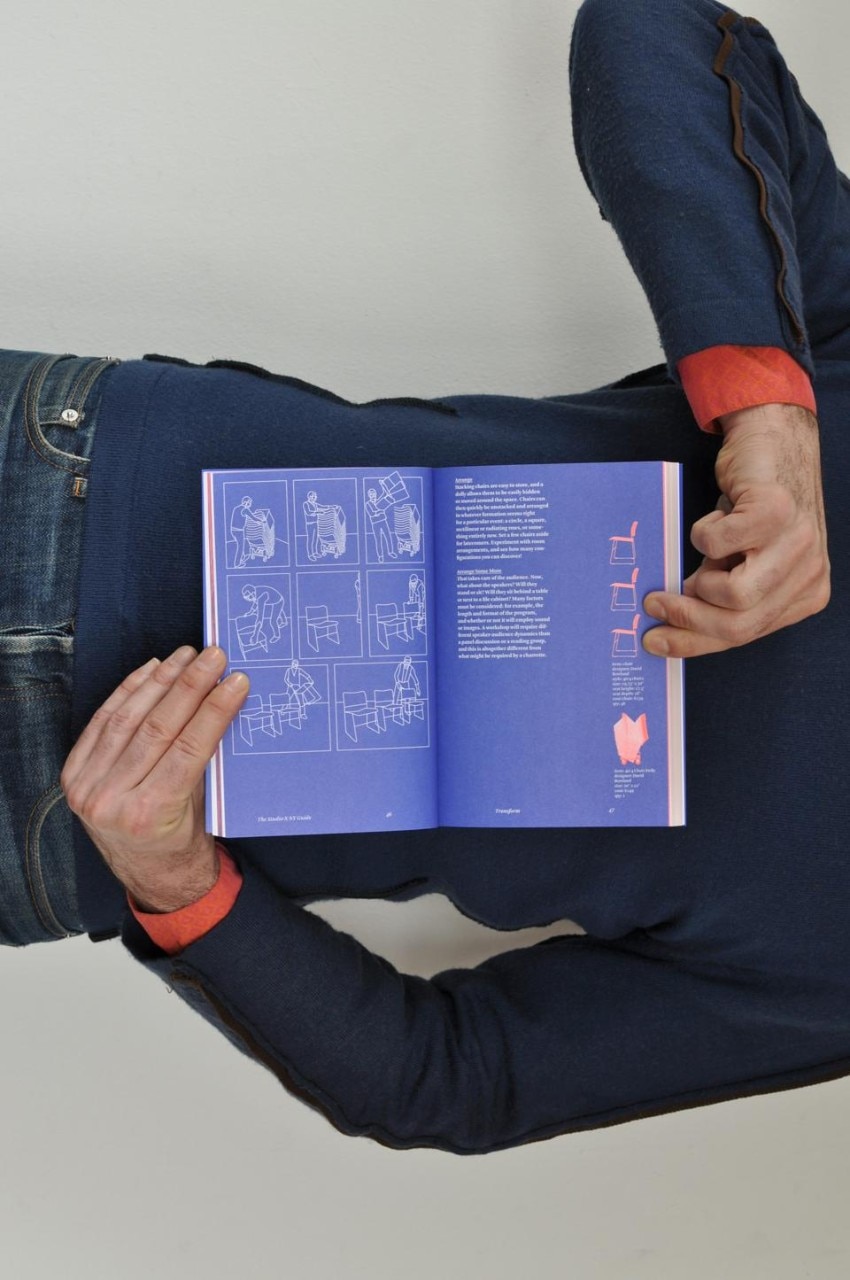
MTWTF: Juan Astasio, who was interning over the summer, worked with Gavin to create icons for each event classification. An "Artists Talk," two artists talking to each other, is represented by two dots. A "Panel," three people talking to each other, is represented by three dots. A "Competition" introduces hierarchy, a "Performance" adds a distinction between performer and an audience, and so on. Icons are stamped on top of events as they appear. When an event overlaps two categories, it gets a stamp for each.
Any other experience you had when putting this book together you would like to share?
MTWTF: It's impossible to map-out anything creative before you begin, so the creation of the book was also a moment for us to work with Gavin to post-rationalize the more intuitive aspects of his programming. Since we are big fans of the Studio-X network project and Gavin's programming, it was really a treat to spend time thinking about this.
GB: The book wouldn't be successful without MTWTF's incredible design. I'm sure there will be lots of Studio-X publications in the future, but I think it's fitting that the first is a guidebook. Like three popular exhibitions at Studio-X NY—Safari 7 Reading Room, which uncovered wildlife along the MTA No. 7 train; TRANS SIBERIA, which charted the spread of communism through administrative-building typology between Moscow and Beijing; and Listening There: Scenes from Ghana, which rediscovered modernism in contemporary Accra—people are encouraged to explore.
